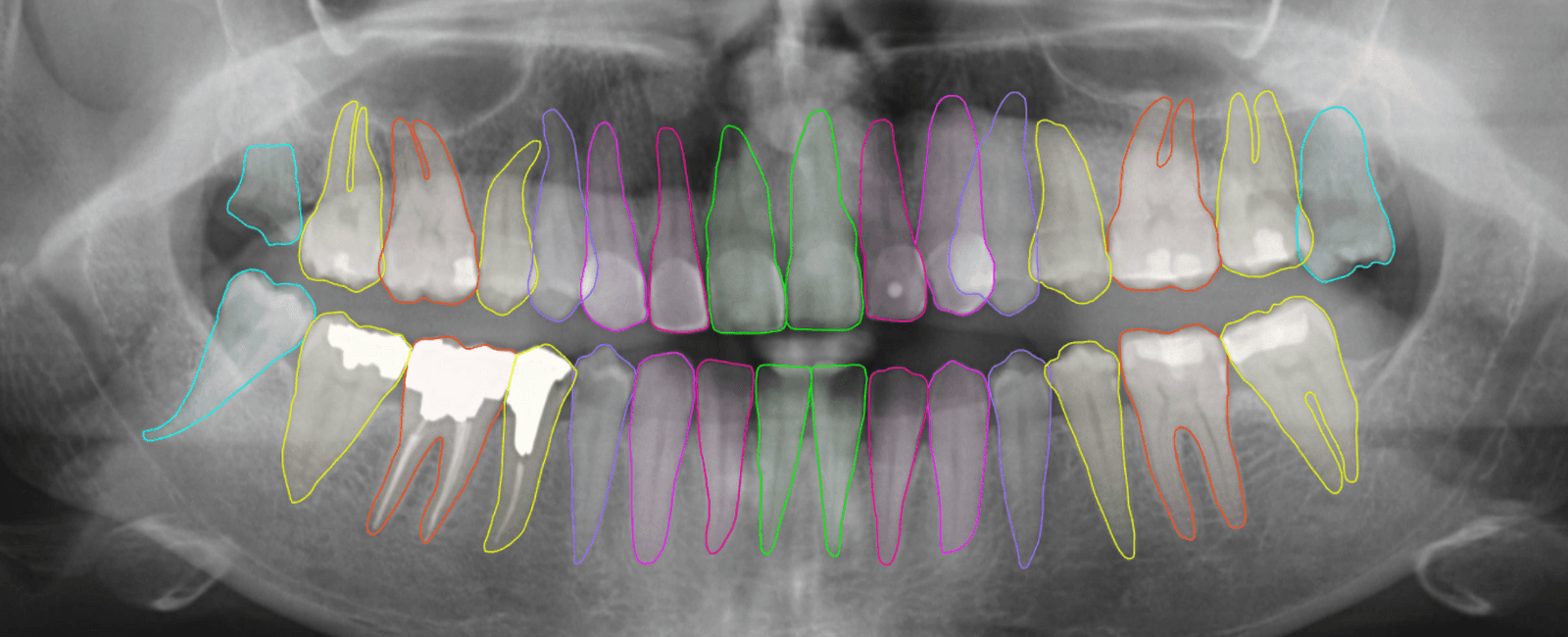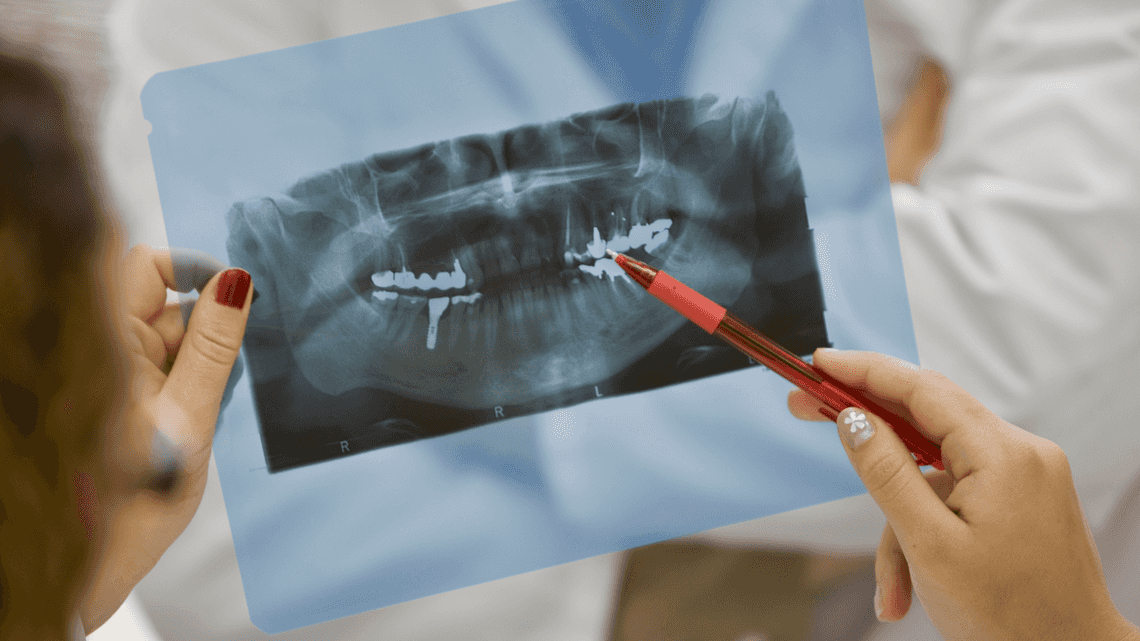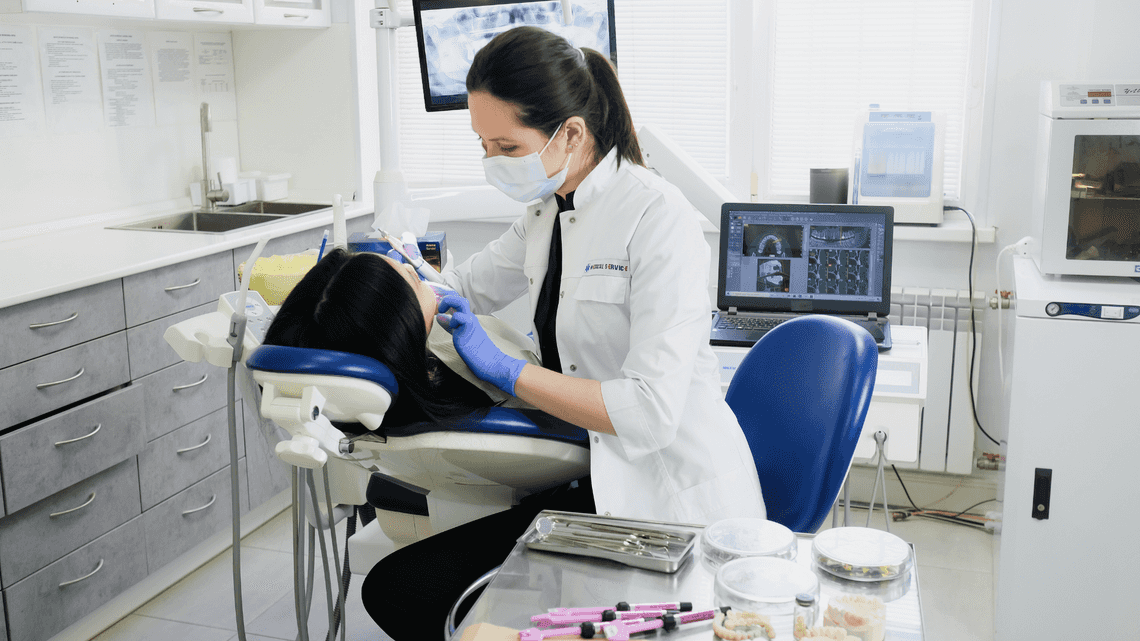Dental Disease Identification through AI-Powered Analysis

In the realm of healthcare, the integration of cutting-edge technology has propelled us into new frontiers of diagnosis and treatment. In particular, the realm of dentistry has witnessed the power of AI in the identification of dental diseases, bringing precision and efficiency to diagnostics. But, as with any AI application, data is the cornerstone of success. Accurate, comprehensive, and meticulously labeled data fuels the AI engine, enabling it to make informed decisions that can potentially transform healthcare outcomes. At Co-one, we recognize the paramount importance of data labeling in this process, and we pride ourselves on providing top-notch solutions that ensure accurate annotations, a pivotal step in the journey toward AI-powered dental disease detection and beyond.

How do we prepare the data?
When annotating teeth using the polygon method in dental X-ray images, we focus on outlining the distinct boundaries of each tooth. We have dedicated data annotators with expertise in the healthcare sector. Our aim is to ensure the precision and accuracy needed for training AI models to accurately identify and analyze teeth structures. As we label polygons on teeth, we keep in mind several crucial considerations to ensure the quality and effectiveness of the annotations:
Precision and Accuracy: We prioritize accuracy, meticulously following the contours of each tooth to capture its unique shape and borders precisely.
Avoid Overlapping: Our annotations for adjacent teeth are carefully crafted to prevent overlap. By clearly defining the boundaries of each tooth, we eliminate confusion during AI model training and analysis.

Anatomical Variations: We account for variations in teeth size, shape, and position. Our annotations accurately represent these variations, including anomalies like crowding, spacing, and irregularities.
Relevant Information for Categorization: Alongside each polygon annotation, we include essential details such as tooth number or type (e.g., incisor, molar) for accurate identification.
Annotation Quality Control: Regular reviews and validation checks ensure annotation accuracy and adherence to guidelines, upholding the integrity of our annotated dataset.

Clear Margins: Our annotations clearly delineate the margins of each tooth’s crown and root, avoiding excessive extensions beyond visible borders.
Consider Occlusions: When annotating overlapping teeth or occlusions, we outline the visible portions of each tooth while ensuring distinct annotations.

Challenges Documentation: In cases of partially obscured or challenging-to-identify teeth due to overlapping structures, we annotate as much of the visible tooth as possible and document these challenges for reference.
Labeling in AI Collaboration: We combine the capabilities of artificial intelligence and human expertise to apply polygon annotations.
Our comprehensive approach to tooth annotation aims to contribute to accurate AI model training, benefiting dental applications by enabling enhanced diagnosis, treatment planning, and overall dental healthcare.
AI Studies in Dental Diagnostics
By harnessing artificial intelligence and leveraging dental X-ray films as data, a multitude of impactful studies can be conducted.

Dental Anomaly Detection: AI-powered analysis can help identify various dental anomalies such as cavities, fractures, and misalignments with precision. By training models on annotated X-rays, algorithms can swiftly detect and highlight abnormalities, assisting in early diagnosis and treatment planning.
Orthodontic Assessment: Polygon annotations on teeth can enable AI models to assess orthodontic conditions, such as teeth alignment and occlusion. This can aid orthodontists in devising personalized treatment strategies for patients seeking braces or aligners.
Periodontal Health Analysis: AI algorithms can be trained to evaluate periodontal health by analyzing X-ray images annotated with polygons. Detection of periodontal bone loss and gum diseases can be automated, supporting dentists in maintaining optimal oral health for their patients.
Implant Planning: Annotated X-ray images can be used to develop AI models that assist in dental implant planning. The AI can recommend optimal implant positioning, considering factors like bone density and adjacent tooth structures.
Caries Detection: The polygon annotations on dental X-rays can aid in identifying early signs of dental caries (cavities). AI algorithms can scan X-rays for regions of interest, flagging potential cavities for further examination.
Endodontic Analysis: AI-powered analysis can assist in endodontic assessments by evaluating root canal structures within the annotated X-ray images. This helps dentists in diagnosing and planning treatments for root-related issues.
Fracture Detection: Annotated X-rays can be utilized to develop AI models that pinpoint fractures in teeth or jaws. Rapid detection of fractures can lead to prompt treatment and improved patient outcomes.
Radiographic Interpretation: AI algorithms can be trained to interpret radiographic features, providing dentists with automated insights on X-ray images annotated with polygons. This enhances diagnostic accuracy and saves valuable time.
Incorporating AI and polygon annotations into dental X-ray analysis holds the promise of revolutionizing dental diagnostics, treatment planning, and patient care, ultimately contributing to more efficient and effective oral healthcare practices.
As you delve deeper into the world of AI-driven dental studies, consider the pivotal role that precisely labeled data plays in shaping these innovations. At Co-one, we take pride in our expertise in data labeling, ensuring that AI algorithms receive the accurate, reliable data they need. Contact us in shaping the future of dental diagnosis through the synergy of AI and human expertise. Explore the remarkable possibilities, and let’s chart a path toward a brighter and healthier smile for all.


